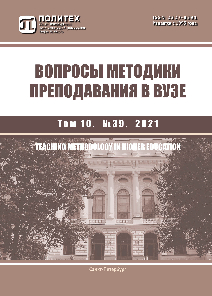Didactic aspects of integration technology of electronic resources into teaching semiotics
The article is devoted to the selection and classification of the principles of integrating electronic didactic materials into the process of professionally-oriented education of students (the discipline «Semiotics»). The article proves that the observance of these principles allows to form the key professional competences indicated by normative documents as the basis of the content of modern education: the willingness of students to work with information in a variety of sources –universal instrumental competencies; the ability to use various forms of education and information and educational technologies (based on modularity, hypertext technology and multimedia) – the competence of self-education; readiness and ability for individual and independent work – the competence of individual work; ability and readiness for social interaction (discussions at seminars) – competence of activity and communication. Following these principles allows solving many modern didactic targets during teaching semiotics: to develop critical thinking skills of students in conditions of working with various information; to create their skills of independent work with educational material using information technologies; to create skills of self-education and reflection; to develop the ability to formulate tasks and to solve it cooperatively; to create self-management and self-study skills.



